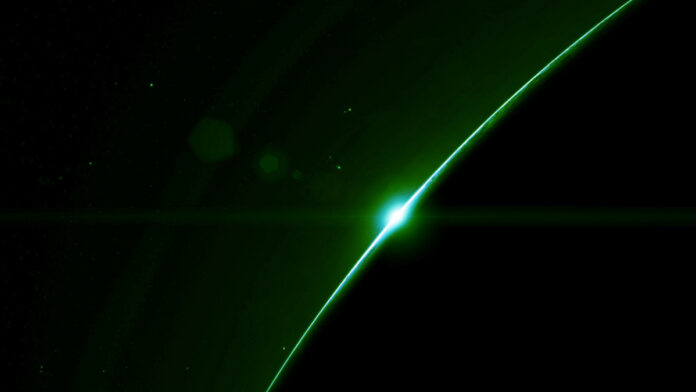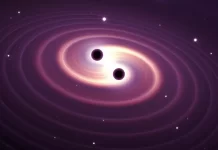The concept of a static and infinite universe is incompatible with the night sky’s darkness because any line of sight from Earth must stop at the surface of a star under the hypothetical scenario when the universe is static, uniform on a massive scale, and home to an unlimited number of stars. As a result, the night sky should be entirely lit up and extremely bright but it’s not. Instead, it seems dark and irregular at the night.
This theory proposes that the universe is expanding, which causes the wavelength of visible light from the Big Bang to increase to microwave scales through a process known as Redshift, which explains the observed non-uniformity of brightness. The resulting microwave radiation background has substantially longer wavelengths (centimeters rather than nanometers), making it appear dazzling to a radio receiver but dark to the naked eye.
There have been many interpretations of this argument, but in the end, it is named after the German astronomer Heinrich Wilhelm Olbers let’s dig deep into this Paradox.
What is Olbers’ Paradox?
The Dark Night Sky Paradox known as Olbers’s paradox is a Paradox that raises the question that for an unspecified time this vast cosmos with an infinite number of stars would be luminous rather than dark. One of the pieces of evidence for a dynamic cosmos, such as the Big Bang theory, is the night sky’s darkness.
To show this, we divide the universe into a series of concentric shells, 1 light-year thick. A certain number of stars will be in the shell 1,000,000,000 to 1,000,000,001 light years away. If the universe is homogeneous at a large scale, then there would be four times as many stars in a second shell, which is between 2,000,000,000 and 2,000,000,001 light years away. However, the second shell is twice as far away, so each star in it would appear one-quarter as bright as the stars in the first shell. Thus the total light received from the second shell is the same as the total light received from the first shell.
Therefore, regardless matter how far away a shell is, each shell of a certain thickness will create the same net amount of light. In other words, each shell’s light contributes to the overall amount. There would be a bright night sky with infinitely many shells, therefore the more shells, the more light. Dark clouds may block the light, but these clouds would warm up to the same temperature as the stars, at which point they would emit the same amount of light.
Kepler interpreted this as supporting the idea that there are only a limited number of stars in the cosmos that can be observed. According to general relativity theory, the paradox might still apply to a limited universe: even though the sky would not be infinitely brilliant, every point would still resemble the surface of a star.
The apparent dilemma, according to the poet Edgar Allan Poe, is resolved by the observable universe’s finite size. More specifically, only a finite number of stars can be seen from Earth because of the universe’s limited age and the finite speed of light (although the whole universe can be infinite in space). Any line of sight from Earth is unlikely to reach a star because the density of stars inside this restricted volume is so low.
The Big Bang theory claims that the sky was much brighter in the past, particularly after the recombination epoch when it first became transparent, however, this seems to create a new issue. Due to the high temperature of the cosmos at the time, all spots in the nearby sky at that time were as luminous as the Sun’s surface, and the majority of light rays will come from a remnant of the Big Bang rather than a star.
The fact that the Big Bang theory also includes the expansion of space, which might result in the energy of radiated light being lowered via redshift, solves this issue. More specifically, the cosmic microwave background radiation is made up of the highly intense radiation from the Big Bang that has been redshifted to microwave wavelengths (1100 times longer than its initial wavelength) as a result of the expansion of the universe. This explains why, despite the Big Bang being thought to have been extremely bright, the majority of our sky has relatively modest light densities and energy levels. Since the most distant galaxies and quasars only have redshifts of between 5 and 8.6, the redshift’s impact on light from distant stars and quasars is minimal.
How This Theory Originated?
Cosmas Indicopleustes, a Greek merchant from Alexandria who lived in the sixth century, was the first to address the issue of an infinite number of stars and the heat they produce in the cosmos. In his Topographia Christiana, he writes: “The crystal-made sky sustains the heat of the Sun, the moon, and the infinite number of stars; otherwise, it would have been full of fire, and it could melt or set on fire.”
The black night sky paradox, considered to be a difficulty in the history of science, is discussed in Edward Robert Harrison’s Darkness at Night: A Riddle of the Universe (1987). Harrison claims that Thomas Digges, who also introduced the Copernican system in English and proposed the idea of an infinite cosmos with an infinite number of stars, was the first to come up with anything resembling the contradiction. The issue was first raised by Kepler in 1610, and Halley and Cheseaux’s work in the 19th century gave the contradiction its final shape.
Although Harrison effectively demonstrates that Heinrich Wilhelm Olbers was neither the first to suggest the conundrum nor was his analysis of it especially insightful, the paradox is frequently credited to the German amateur astronomer who originally described it in 1823. Harrison claims that Edgar Allan Poe’s article Eureka (1848) curiously predicted some qualitative parts of Kelvin’s argument, and that Lord Kelvin was the first to give out an acceptable resolution of the conundrum in a little-known 1901 paper:
“Were the succession of stars endless, then the background of the sky would present us a uniform luminosity, like that displayed by the Galaxy – since there could be no point, in all that background, at which would not exist a star. The only mode, therefore, in which, under such a state of affairs, we could comprehend the voids that our telescopes find in innumerable directions, would be by supposing the distance of the invisible background so immense that no ray from it has yet been able to reach us at all.”
Conclusion
Olbers’ Paradox is a cosmological puzzle that has to do with the mystery of “why the sky is so dark at night”. Every line of sight must eventually come to an end at the surface of a star if the cosmos is infinite and uniformly filled with bright stars. Therefore, this argument indicates that the night sky should be bright everywhere, with no black intervals between the stars, which is contradictory to observation. The German astronomer Heinrich Wilhelm Olbers explored this puzzle in 1823, and he is widely credited with discovering it. The issue was thought about by earlier researchers and can be linked to Johannes Kepler, who argued against the idea of an infinitely large cosmos with an endless number of stars in 1610.
At various points, different resolutions have been put out. The simplest explanation, if the assumptions are true, is that light from really far-off stars hasn’t yet reached Earth since the typical stellar lifetime is much too short. Similar arguments can be made in the context of an expanding universe: the universe is too young for light to have traveled to the Earth from extremely far-off places.
Sources
- Overbye, Dennis. “The Flip Side of Optimism About Life on Other Planets”. The New York Times.
- “Cosmas Indicopleustès. Topographie chrétienne, 3 vols.”, Ed. Wolska–Conus, W.Paris: Cerf, 1:1968; 2:1970; 3:1973.
- Hellyer, Marcus, ed. (2008). The Scientific Revolution: The Essential Readings. Blackwell Essential Readings in History.
- Unsöld, Albrecht; Baschek, Bodo (2001). The New Cosmos: An Introduction to Astronomy and Astrophysics. Physics and astronomy online. Springer.
- Poe, Edgar Allan (1848). “Eureka: A Prose Poem”. Archived from the original.
- Einstein’s Relativity, Oxford, 1992.
- “Poe: Eureka”. Xroads.virginia.edu.
- Brief Answers to Cosmic Questions.
FACT CHECK: We strive for accuracy and fairness. But if you see something that doesn’t look right, please Contact us.
DISCLOSURE: This Article may contain affiliate links and Sponsored ads, to know more please read our Privacy Policy.
Stay Updated: Follow our WhatsApp Channel and Telegram Channel.












